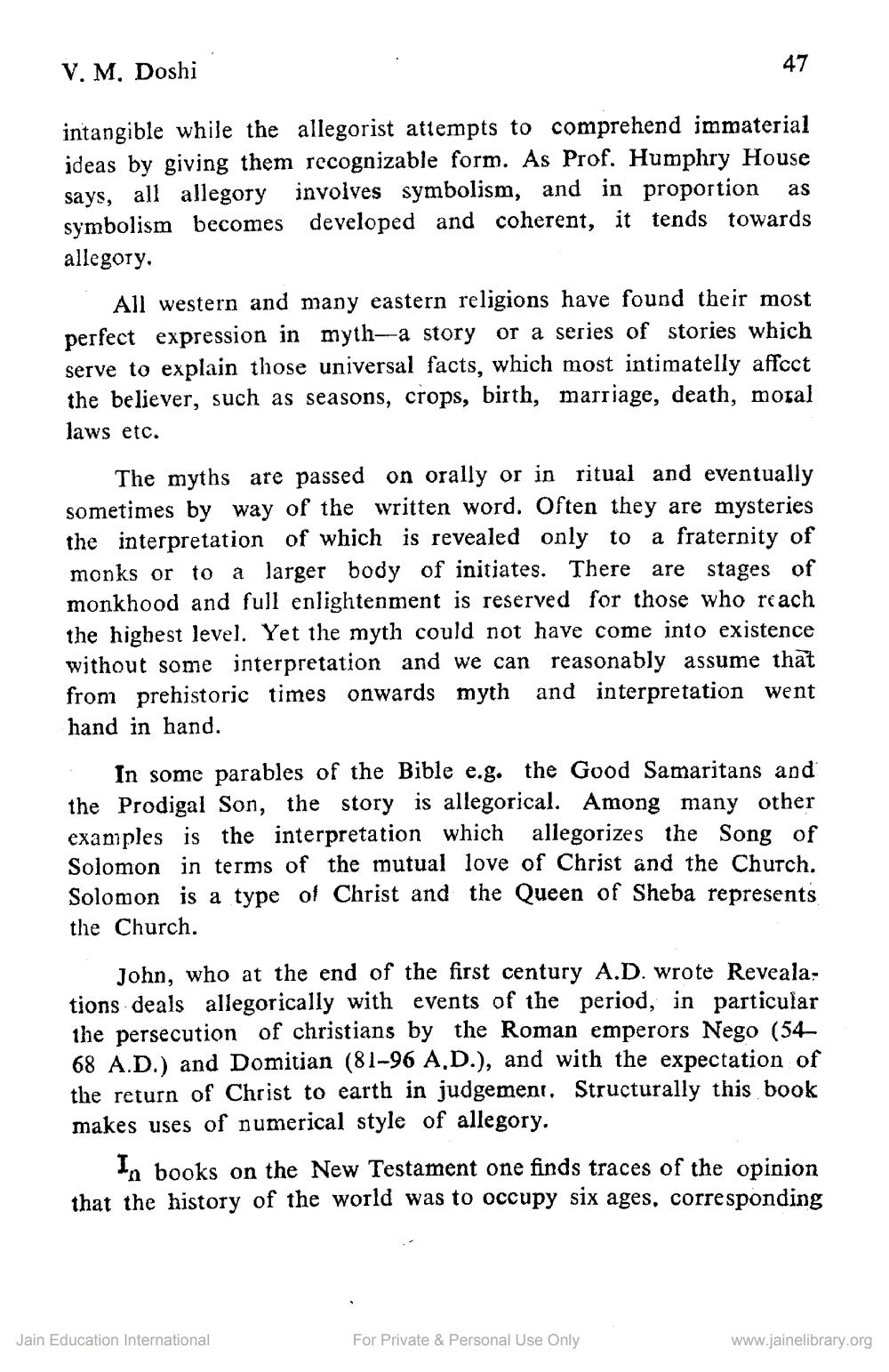________________
V.M, Doshi
47
intangible while the allegorist attempts to comprehend immaterial ideas by giving them recognizable form. As Prof. Humphry House says, all allegory involves symbolism, and in proportion as symbolism becomes developed and coherent, it tends towards allegory.
All western and many eastern religions have found their most perfect expression in myth--a story or a series of stories which serve to explain those universal facts, which most intimatelly affect the believer, such as seasons, crops, birth, marriage, death, moral laws etc.
The myths are passed on orally or in ritual and eventually sometimes by way of the written word. Often they are mysteries the interpretation of which is revealed only to a fraternity of monks or to a larger body of initiates. There are stages of monkhood and full enlightenment is reserved for those who reach the highest level. Yet the myth could not have come into existence without some interpretation and we can reasonably assume that from prehistoric times onwards myth and interpretation went hand in hand.
In some parables of the Bible e.g. the Good Samaritans and the Prodigal Son, the story is allegorical. Among many other examples is the interpretation which allegorizes the Song of Solomon in terms of the mutual love of Christ and the Church. Solomon is a type of Christ and the Queen of Sheba represents the Church.
John, who at the end of the first century A.D. wrote Reveala, tions deals allegorically with events of the period, in particular the persecution of christians by the Roman emperors Nego (5468 A.D.) and Domitian (81-96 A.D.), and with the expectation of the return of Christ to earth in judgemeni. Structurally this book makes uses of numerical style of allegory.
In books on the New Testament one finds traces of the opinion that the history of the world was to occupy six ages, corresponding
Jain Education International
For Private & Personal Use Only
www.jainelibrary.org




